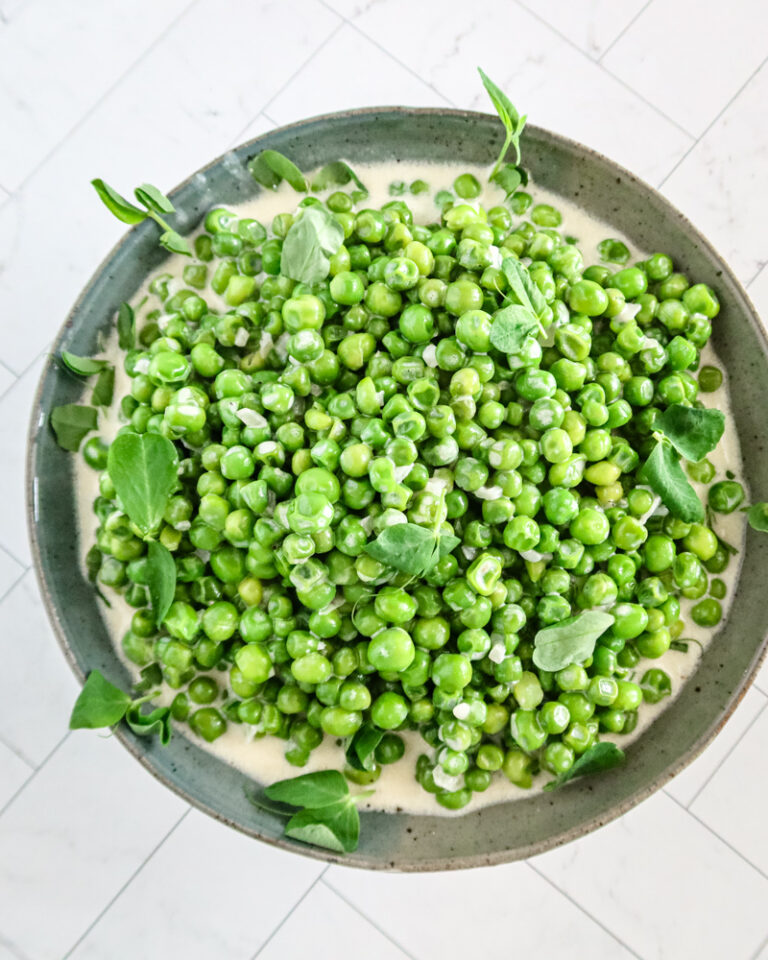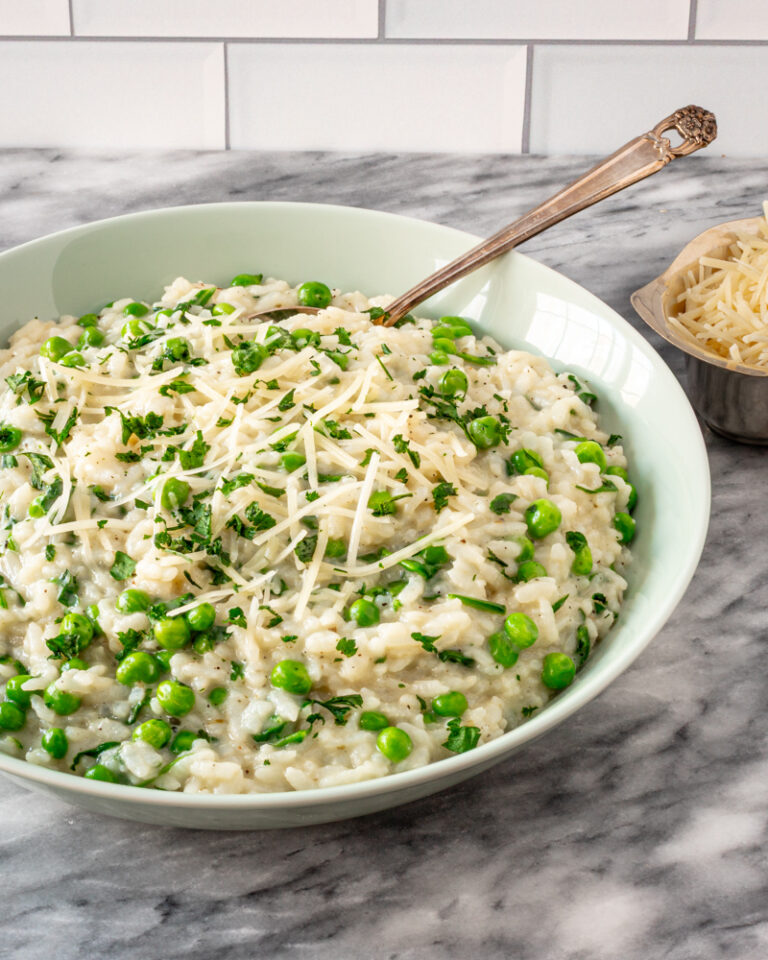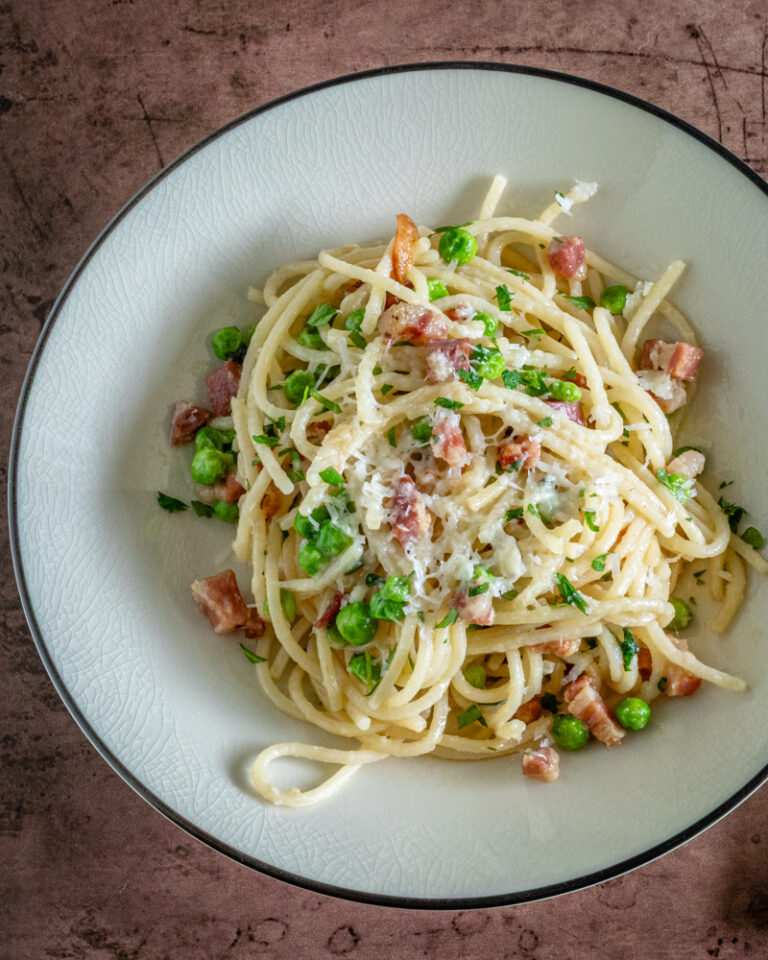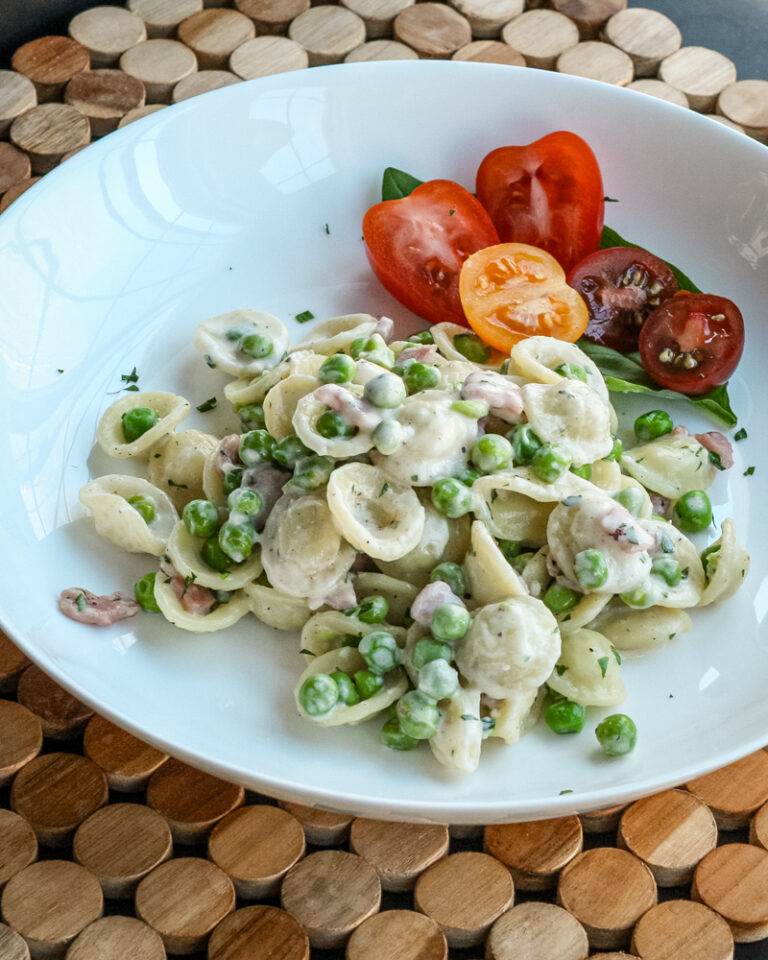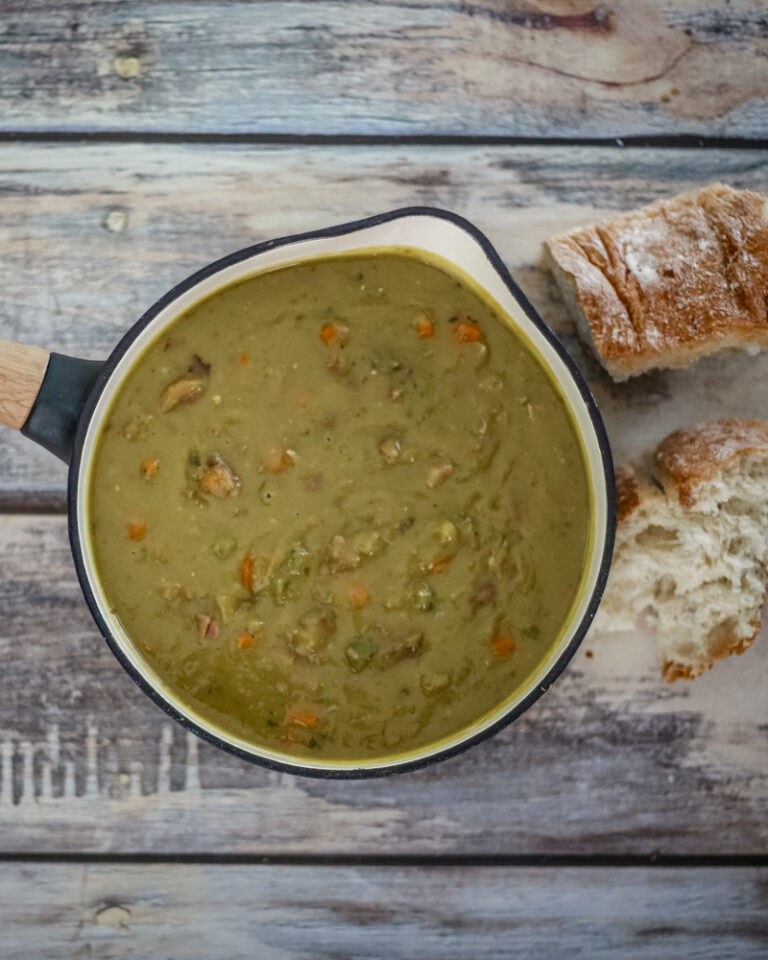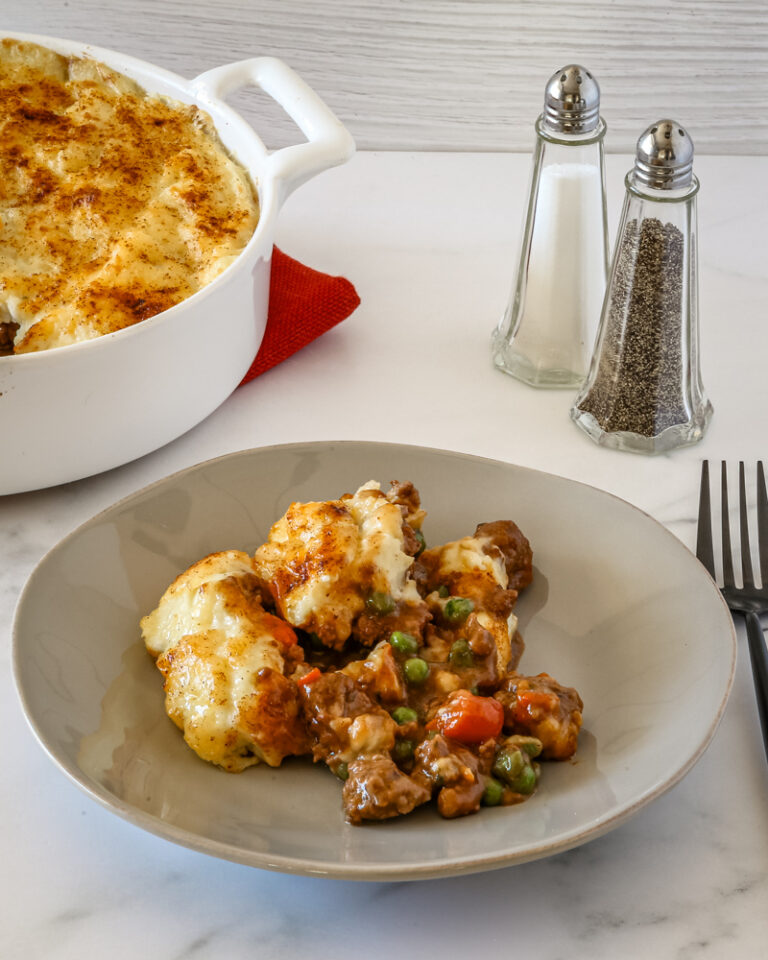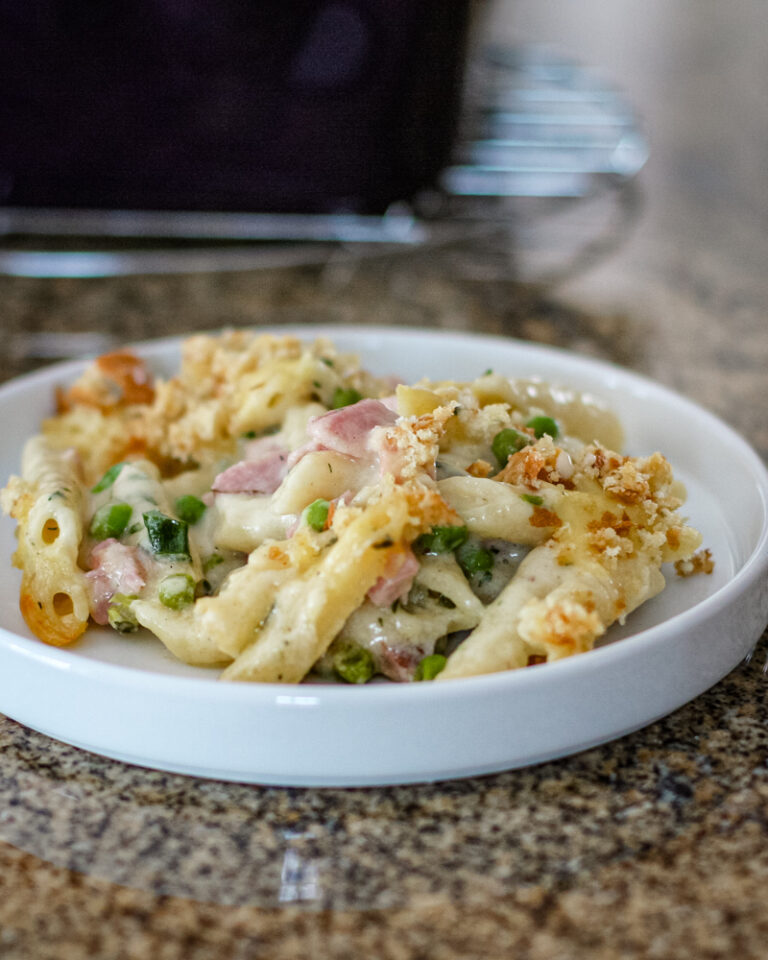Roasted Sugar Snap Peas
Sugar snap peas are a delicious alternative to the everyday peas or green beans. These pea pods are roasted to perfection with sliced shallots.
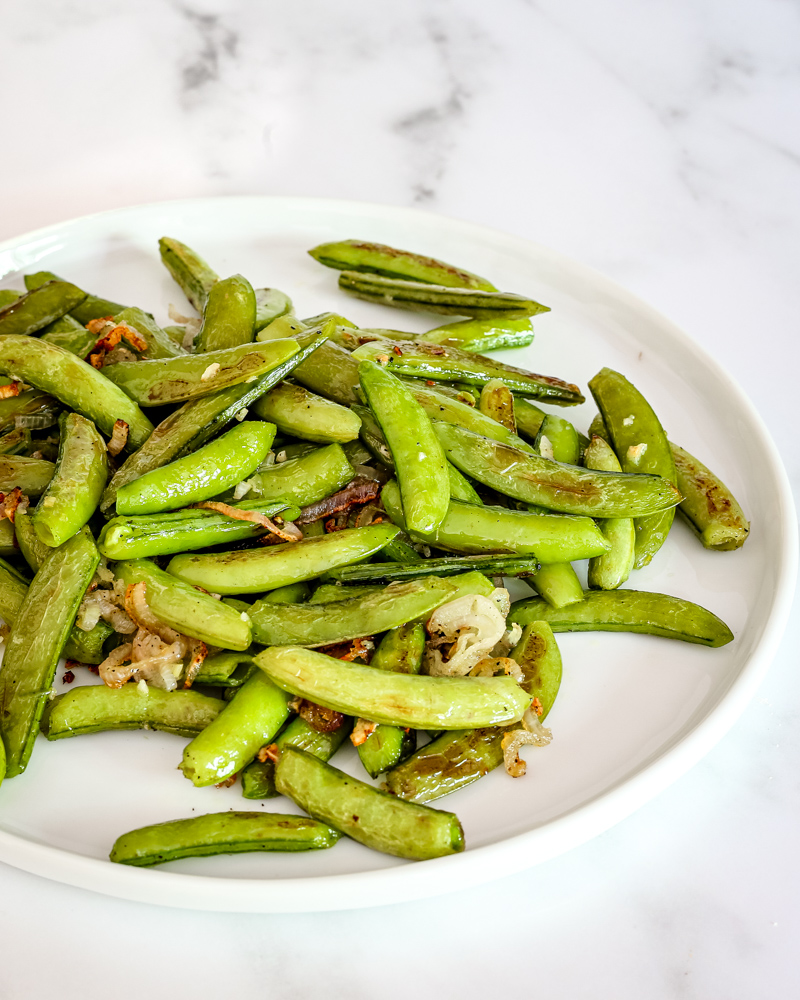
Sugar snap peas are a crisp, sweet alternative to green beans or regular peas, and roasting brings out their best qualities. Tossed with a bit of olive oil, shallots, and garlic, these peas become tender with just the right amount of caramelization.
This recipe comes together quickly and pairs with just about anything—grilled meats, roasted chicken, or pasta. It’s also easy to adapt. Add mushrooms, swap in sliced onions for the shallots, or toss the seasoned snap peas onto a sheet pan dinner in the final minutes of cooking.
What You’ll Like About This Dish
Fast and easy. Just a few ingredients and under 10 minutes in the oven.
Sweet and savory. Roasting intensifies the natural sweetness of the peas while the shallots add depth.
Flexible side dish. Works with chicken, beef, pork, or vegetarian mains.
Ingredient Notes
- Sugar snap peas: Look for firm, bright green pods. Remove the stem ends and strings before roasting.
- Shallot: Adds mild onion flavor. Thinly slice for even cooking.
- Garlic: Minced garlic roasts quickly and adds a savory base.
- Olive oil: Helps the vegetables roast evenly and enhances flavor.
- Kosher salt and black pepper: Simple seasonings to bring out the natural sweetness.
Steps to Make Roasted Sugar Snap Peas
- Preheat oven to 450°F.
- Trim stem ends and remove strings from snap peas. Rinse and pat dry.
- Thinly slice the shallot and mince the garlic.
- In a bowl, toss snap peas, shallot, and garlic with olive oil, salt, and pepper.
- Spread mixture evenly on a rimmed baking sheet.
- Roast for 8 to 10 minutes, or until the peas are tender and lightly browned.
Tips for Roasted Sugar Snap Peas
- Dry the peas well after rinsing to help them roast instead of steam.
- Spread the vegetables in a single layer so they cook evenly.
- For deeper browning, use a dark baking sheet or preheat the sheet in the oven.
- Roast closer to 8 minutes if you prefer crisper peas, or closer to 10 for more tenderness.
Recipe Variations
- Use onions. Substitute thinly sliced onion for the shallots if that’s what you have on hand.
- Add mushrooms. Toss in thickly sliced mushrooms to roast alongside the peas.
- Sheet pan shortcut. Add the peas to a sheet pan dinner during the last 9 to 10 minutes of roasting.
- Spice it up. Add a pinch of red pepper flakes or a drizzle of chili oil for heat.
- Lemon finish. Squeeze fresh lemon juice over the roasted peas just before serving.
Serving Suggestions
- Serve with roasted chicken or grilled steak.
- Pair with salmon or other fish for a light spring meal.
- Add to grain bowls or pasta dishes.
- Use as a side dish for weeknight stir-fries or teriyaki chicken.
How to Store
Refrigerate: Store leftover roasted peas in an airtight container in the fridge for up to 3 days.
Reheat: Warm briefly in a hot skillet or in the oven at 375°F until heated through. Avoid microwaving for too long, which may make them soft.
Freeze: Not recommended, as snap peas lose their crisp texture when frozen and reheated.
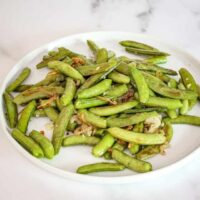
Roasted Sugar Snap Peas
Ingredients
- 1 pound sugar snap peas
- 1 large shallot
- 2 cloves garlic
- 1 1/2 tablespoons olive oil
- 3/4 teaspoon kosher salt
- 1/4 teaspoon ground black pepper, or to taste
Instructions
- Heat the oven to 450 F.
- Remove the stem end and strings from the pea pods. Rinse the sugar snap peas under cold running water. Pat dry with paper towels and remove to a bowl.
- Peel the shallot and slice it thinly. Mince the garlic. Add the shallot and garlic to the bowl with the pea pods.
- Toss the vegetables with 2 tablespoons of olive oil and the salt and pepper.
- Spread the sugar snap peas out on a rimmed baking sheet.
- Bake the pea pods in the preheated oven for 8 to 10 minutes, or just until tender and browned.
Nutrition
Disclaimer:
Our nutritional information is based on a third-party application that analyzes the ingredients list to determine the values. The information is meant to be helpful, but should be considered an estimate. Values may differ depending on measurements, brands, serving variations, and database availability.

